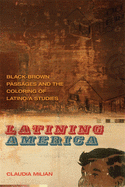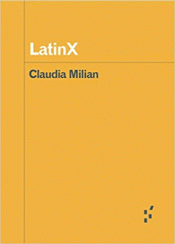Para envío
With Latining America, Claudia Milian proposes that the economies of blackness, brownness, and dark brownness summon a new grammar for Latino/a studies that she names "Latinities." Milian's innovative study argues that this ensnared economy of meaning startles the typical reading practices deployed for brown Latino/a embodiment.
Latining America keeps company with and challenges existent models of Latinidad, demanding a distinct paradigm that puts into question what is understood as Latino and Latina today. Milian conceptually considers how underexplored "Latin" participants--the southern, the black, the dark brown, the Central American--have ushered in a new world of "Latined" signification from the 1920s to the present.
Examining not who but what constitutes the Latino and Latina, Milian's new critical Latinities disentangle the brown logic that marks "Latino/a" subjects. She expands on and deepens insights in transamerican discourses, narratives of passing, popular culture, and contemporary art. This daring and original project uncovers previously ignored and unremarked upon cultural connections and global crossings whereby African Americans and Latinos traverse and reconfigure their racialized classifications.
Latining America is a pathbreaking intervention into the field of U.S. Latino/a studies. Claudia Milian dislodges the mainline North-South axis of analysis of U.S. southern and American studies in order to build a new analysis of African American and Latino/a positionalities in what she terms the 'Global Nuevo South.' Milian thus establishes a breathtaking commonality of Latinidades based upon the ways Central American Americans, Dominican Americans, and Chicanos and Chicanas have historically traveled through the raciological color lines of the United States. By bringing some of the rich, ethnoracial heterogeneity of U.S. Latinos and Latinas from the diasporas and borderlands of the Americas into her analysis of the U.S. South and the Global South, Milian raises important questions relating to the geospatial inequalities that determine so many of the visions of U.S. Latino and Latina writers and intellectuals.
--David Saldívar "Stanford University"




